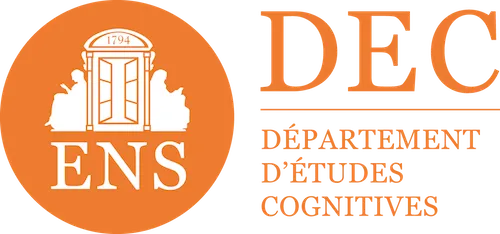

The 7 structural limits of traditional LMSs that hinder your training
Several hours to create a single hour of interactive training. This summarizes the paradox of current Learning Management Systems: designed to facilitate online training, they generate cumbersome processes that hinder the agility of organizations. Businesses are multiplying investments without, however, observing the expected results.
The numbers speak for themselves: 60% of non-tutored training programs have a completion rate of less than 10%. The problem is not a bug, it is an inherent characteristic of the classical model that focuses on administration rather than digital learning.
Why current platforms are not keeping their promises
The digital learning market is experiencing spectacular growth. 41% of businesses use a paid platform to manage their training programs. However, the reality on the ground contrasts with marketing promises.
Organizations are investing heavily in these management systems in the hope of achieving commitment, efficiency and flexibility. The reality is quite different. Completion rates are stagnant, online courses remain under-consulted, and the return on investment remains invisible.
This situation is not the result of poor configuration or lack of budget. The structural limitations stem from a model designed to manage training content rather than to transform learners. Even the open source solutions like Moodle are experiencing these same difficulties.
The 7 structural limits that hinder the effectiveness of platforms
Limit 1: Content creation remains time consuming and complex
Creating a module requires several hours of work for a single hour of instructional content.
This heaviness is explained by the multiplicity of stakeholders: educational engineers, graphic designers, developers, business experts. Each change triggers a validation process that extends the implementation time.
Direct consequence: your training courses are three weeks behind schedule with job news. An urgent product update? A regulatory evolution in your field? By the time the session is created, the information is already obsolete. This difficulty particularly affects training organizations, which must respect strict standards such as the norm. SCORM (Sharable Content Object Reference Model).
The time-consuming steps are piling up:
- Instructional design and goal definition
- Screenwriting and writing via The authoring tool
- Media coverage and integration on a computer or tablet
- User testing and interface adjustments
- Validation by stakeholders and implementation
Limit 2: Generic content that is not adapted to specific contexts
Catalogs are the easy way for organizations. Problem: generic modules remain largely underused by employees or employees.
A salesperson in the pharmaceutical sector and a luxury salesperson do not have the same needs when it comes to managing objections. Generic training remains theoretical and disconnected from the workplace. The learner does not make the link between the course and his professional daily life.
As a result, the rate of transfer of skills in the field remains low. Employees follow the training by obligation but do not change their practices. This limit affects both distance learning and Blended Learning combining face-to-face and digital.
Limit #3: The lack of adaptability and personalization
The standard model imposes the same training path for everyone. Thousands of learners follow exactly the same system, regardless of their initial level or progression.
Those who already know the basics are wasting their time. Those in trouble don't get the support they need. The absence of relevant positioning tests prevents any adaptation. Adaptive learning remains absent from traditional platforms.
This monolithic approach contrasts with modern expectations. Netflix customizes its recommendations, Spotify adapts its playlists. Why should vocational training remain static? The autonomy of the learner in his educational journey becomes crucial to maintain motivation.
A lack of personalization is part of the reason for the high dropout rates. Learners disengage in the face of inappropriate content, whether on mobile, tablet or computer.
Limit #4: Structurally weak learner engagement
The “Next—Next” format generates passive learning. Static slides alternate with quizzes that are disconnected from real practice. The educational activity is limited to simple consultation.
The very architecture of these management software does not allow for real Situations. No contextual training, no personalized feedback, no cognitive engagement mechanisms. The Social learning and collaborative learning remain difficult to organize.
The numbers confirm this limit: 67% of tutored devices obtain a completion rate greater than 60%, compared to only 47% for those who were not tutored. The intervention of the trainer remains essential to maintain the commitment of the group.
The principles derived from cognitive science (spaced retrieval, test effect, active learning) remain largely ignored in module design. The fun gamification functions are not enough to compensate for this structural defect.
Limit 5: The invisible ROI and the impossibility of measuring the real impact
Traditional systems measure completion and satisfaction. Nothing more. It is impossible to quantify the actual acquisition of skills or the change in behavior in the field. The assessment remains superficial.
Without granular impact data, training directors are managing blindly. Which modules generate real results? Which are ineffective? What is the return on investment of training budgets ? Monitoring progress lacks analytical depth.
This lack of measurement prevents any optimization and improvement. Organizations repeat the same mistakes without being able to identify what is really working. The cost of ineffective training remains invisible.
Limit No. 6: Locking yourself in the platform at the expense of LIFOW
The concept of learning in the workflow, in English, Learning In the Flow of Work (LIFOW) remains inaccessible with LMS (Learning Management Systems) traditional. Online learning can only be done on the platform, disconnected from daily tools and real work.
This centralized model reproduces the prison classroom in the training world. Employees should pause their work, access the system, complete the online course, and then get back to work. Mobile learning exists but remains compartmentalized, difficult to use on the phone.
Platforms try to compensate by recreating forums, chats and exchange spaces. The result: a fragmented experience that no one uses, because these functions already exist elsewhere. The social dimension of learning remains artificial.
Limit 7: Inadaptation to certain subjects requiring practice
Training requiring manipulation, physical experimentation or complex human interactions is difficult to find. The type of device proposed is not suitable for technical learning.
The format favors theory at the expense of implementation. The simulations remain basic, the scenarios superficial. Choosing between face-to-face and distance learning is becoming a dilemma for managers.
Important nuance: the problem is not digital in itself. The benefit of technology is real. These are the current systems that do not offer the right pedagogical mechanisms. Technologies exist (immersive simulations, micro-challenges in the field, training in situations) but remain absent from standard platforms, even in the education system.
From diagnosis to solutions: how to overcome these limitations
Moving from the classical model to the Learning Transformation Platform
Faced with these structural limitations, Didask is the solution. La training platform puts learning back at the heart of technology.
It operates three key transformations.
- Content transformation : educational artificial intelligence reduces creation time by 10 while guaranteeing cognitive efficiency.
- Learner transformation : adaptive learning customizes courses in real time.
- Organizational transformation : granular metrics measure the real impact.
This evolution is based on cognitive science. Each function meets a validated scientific principle: spaced retrieval for memory anchoring, test effect for consolidation, optimal cognitive load for learning. The new generation of platforms offers a better application of pedagogical principles.
The 4 criteria to assess whether your system is adapted to your challenges: checklist
Traditional systems have had their day
The seven limitations identified are not dysfunctions. They characterize a model that has become obsolete in the face of current vocational training challenges.
The lifespan of a technical skill has increased from 30 years in 1987 to only 2 years today. This technological acceleration requires tools that can quickly create relevant content, measure the real impact and support each learner in increasing their skills.
The Learning Transformation Platform meets these challenges by placing educational effectiveness at the center. AI accelerates creation, adaptive learning personalizes the experience, cognitive sciences guarantee the anchoring of skills. The choice of a new solution becomes strategic to manage training in an efficient IT manner.
Discover the Didask training platform and transform your approach to digital training.
Make an appointment directly with our eLearning experts for a demo or simply more information.












